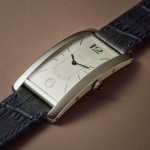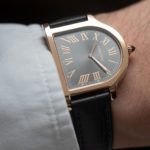Hands On: Cartier Privé Tortue Monopoussoir Chronograph
A favourite returns with an all-new movement.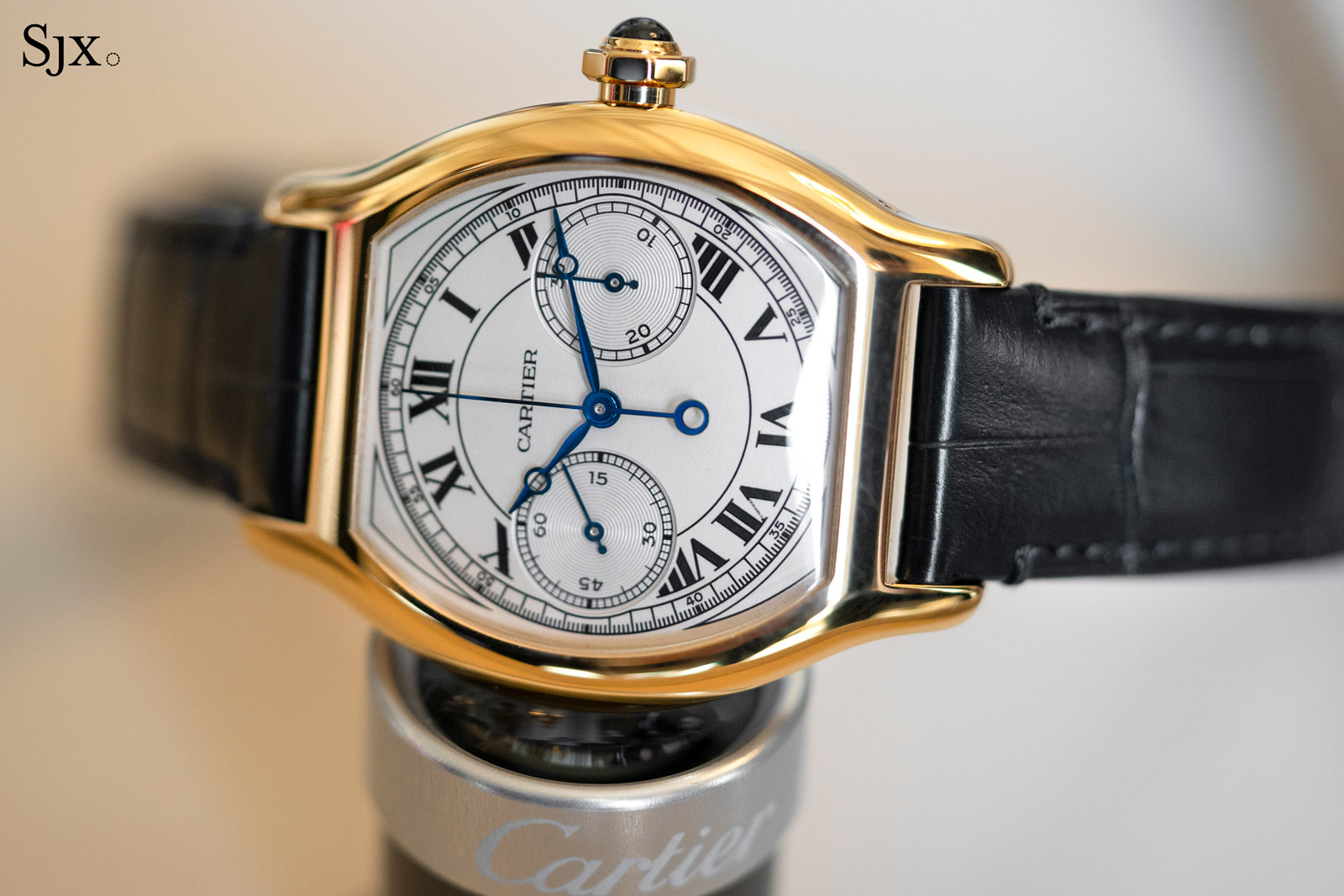
Perhaps unsurprising given Cartier’s track record with the Privé collection, the jeweller has revived its popular single-button chronograph – but with an all-new movement. The Cartier Privé Tortue Monopoussoir Chronograph is a manual-wind chronograph powered by the cal. 1928 MC, a form movement conceived for the watch.
Making its debut well over a decade after the discontinuation of the Collection Privée Cartier Paris (CPCP) version, the new Tortue Monopoussoir is slightly larger than its predecessor, but also thinner and more elegantly proportioned.
While the cal. 1928 MC inside is new – the movement is notable in itself – the aesthetic is more vintage inspired, particularly on the yellow gold version; the other version is platinum.
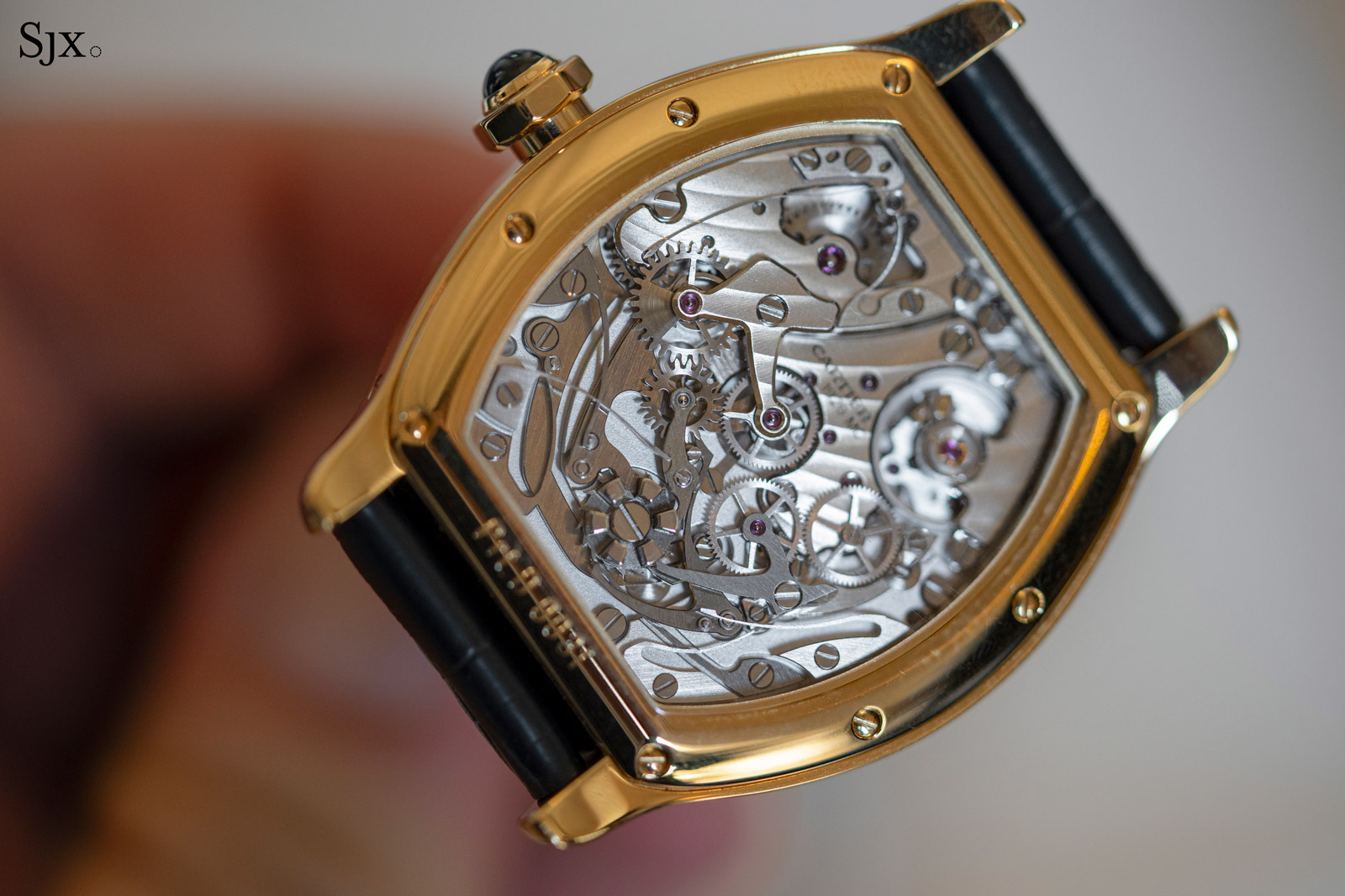
The cal. 1928 MC
Initial thoughts
Although relatively straightforward in concept and design, the Tortue Monopoussoir is executed well. Although the visuals are faithful to the vintage originals, especially with the yellow gold version, the watch feels contemporary because of the size.
At just over 10 mm high, the proportions of the case are excellent. It feels elegant and neither too big nor too small. And it is surprisingly thin for a chronograph, which is especially appealing. Relatively to its predecessors, the new Tortue Monopoussoir sits in between: larger than the first CPCP version, but smaller than the CPCP XL model, making it just right.
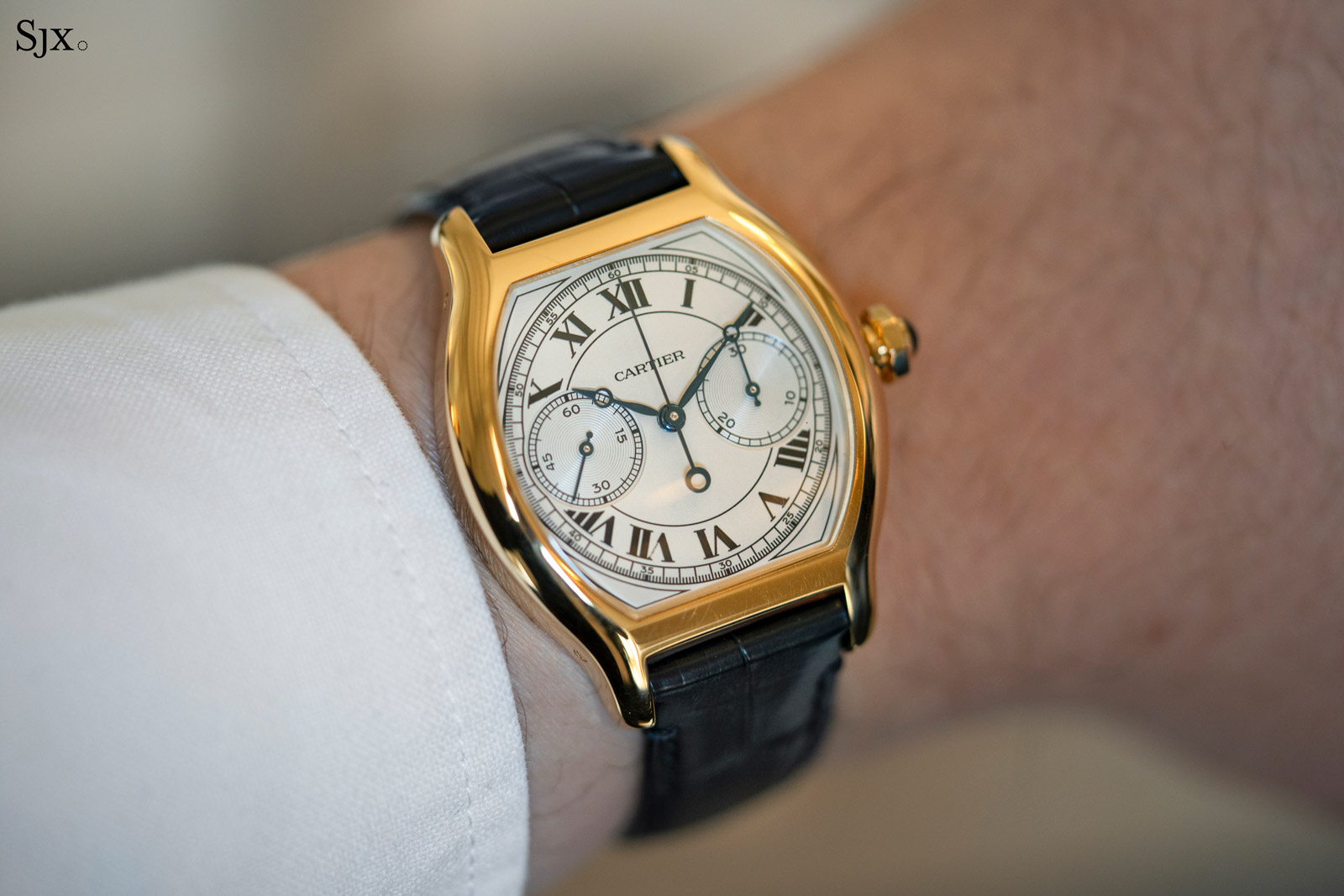
Between the yellow gold and platinum models, the former looks most like the 1928 original, albeit in a much larger size; the original is incredibly tiny by modern standards. Besides the design, the grained finish on the dial of the gold model captures the spirit of original quite well.
Though the platinum is similar in many respects, it looks more like a modern watch. The dial has a silvered opaline finish with mirrored Roman numerals that gives it a contemporary feel. The two versions are priced only 10% apart, so the choice really comes down to personal preferences.

Platinum (left), and yellow gold. Image – Cartier
Aesthetics aside, the Tortue Monopoussoir is also appealing because of the movement. The cal. 1928 MC is notable for being a new calibre, but also a shaped movement. Though it shares some basic components with other Cartier movements, the cal. 1928 MC is an original construction – developed in collaboration with Le Cercle des Horlogers – which is a rare thing. It has an attractive layout and design, though the Etachron regulator should have been replaced with something better looking.
With a price tag around the US$60,000 market, the Tortue Monopoussoir is priced well. It’s not quite a value proposition, but good enough as such things go. The relatively small edition size of 200 in each metal also adds to the appeal.
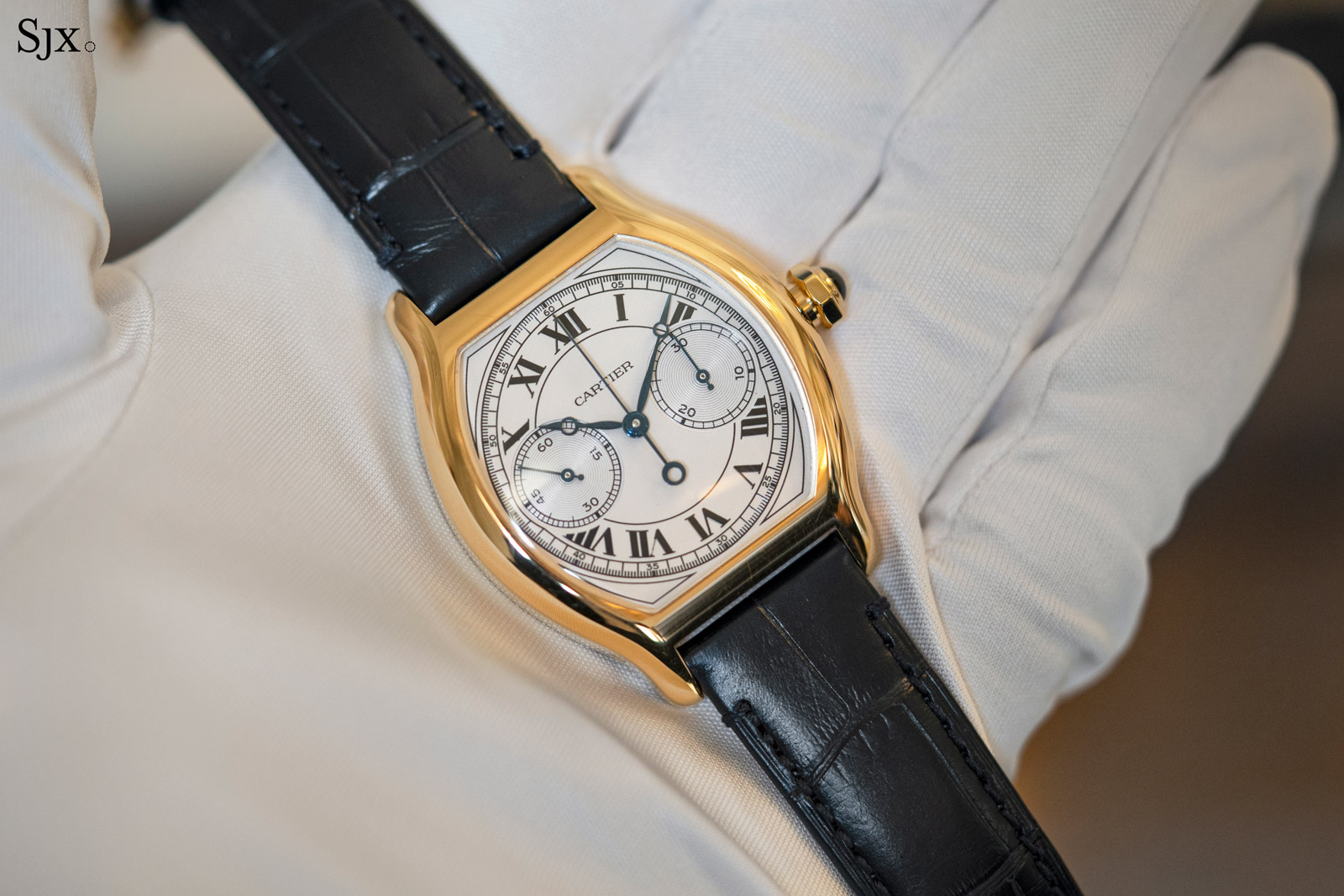
A favourite returns
The Privé collection is all about reissues of historical models, which started with the Tank Cintrée of 2018, and continued with models like the Cloche and Tank Normale. The eighth instalment in the series is the Tortue Monopoussoir. (Being launched alongside the chronograph is the Cartier Privé Tortue Hours/Minutes equipped with the cal. 430 MC.)
Originally introduced by Cartier in 1928, the vintage Tortue monopoussoir – which translates as “single button” – long held the record for the most expensive Cartier wristwatch ever sold until the recent fad for Cartier watches.
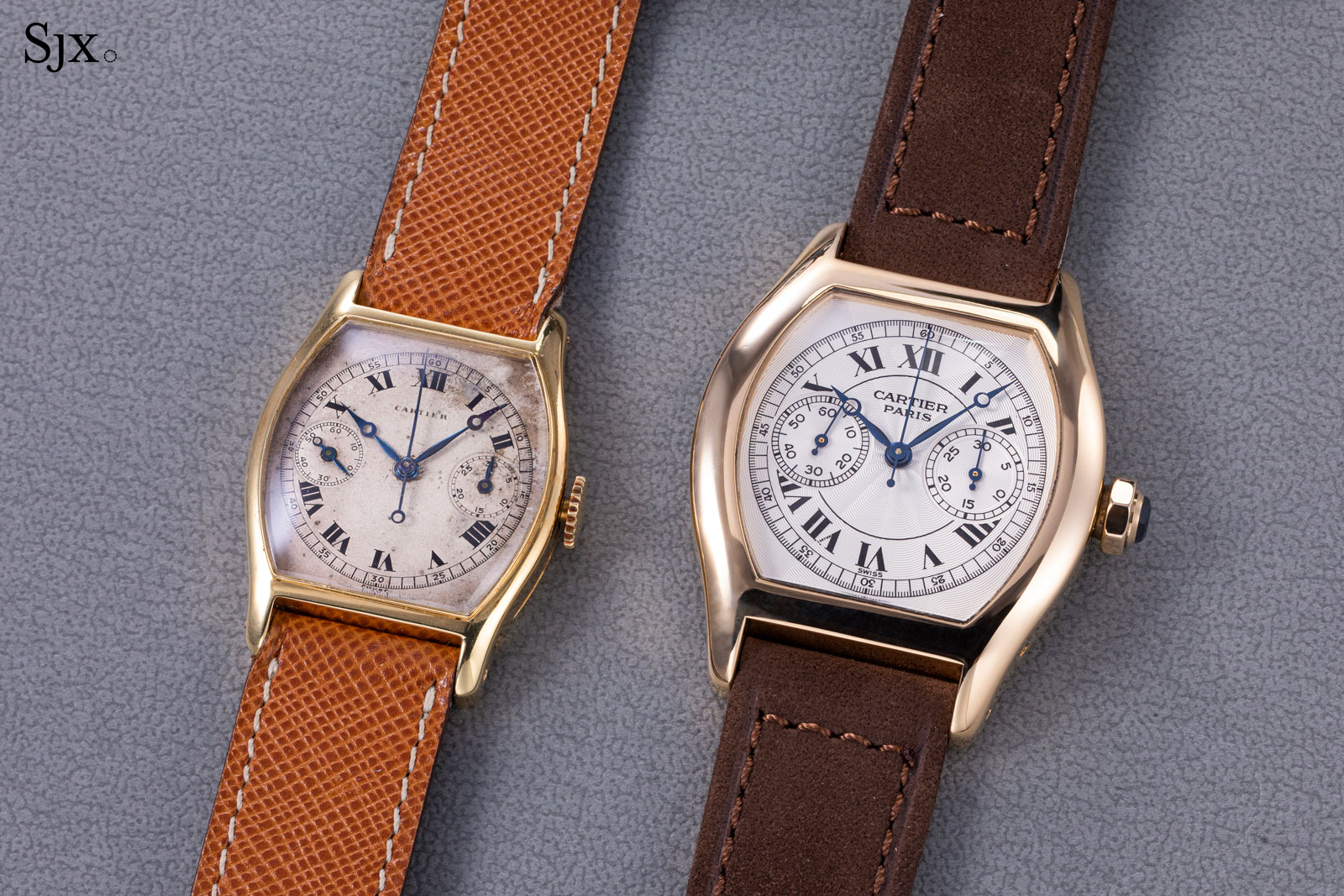
A vintage Tortue monopoussoir chronograph from the 1920s (left) and its CPCP counterpart
It was resurrected in 1998 as the CPCP Tortue Monopoussoir Chronograph, a model that was available in several variants and two sizes. The CPCP version stayed in production for about two decades, meaning a fair number were made, explaining the relative frequency with which they are seen on the secondary market.
In terms of design, the new Tortue Monopoussoir takes its cues from the CPCP model, though has more of a vintage aesthetic due to the dial details. The Roman numerals sit on a closed track surrounded by a railway minute scale, while the hands are traditional Breguet style in blued steel.
An interesting addition to the dial design are the triangles at each corner of the dial that are found on neither the original or CPCP versions but feel period correct in terms of style.
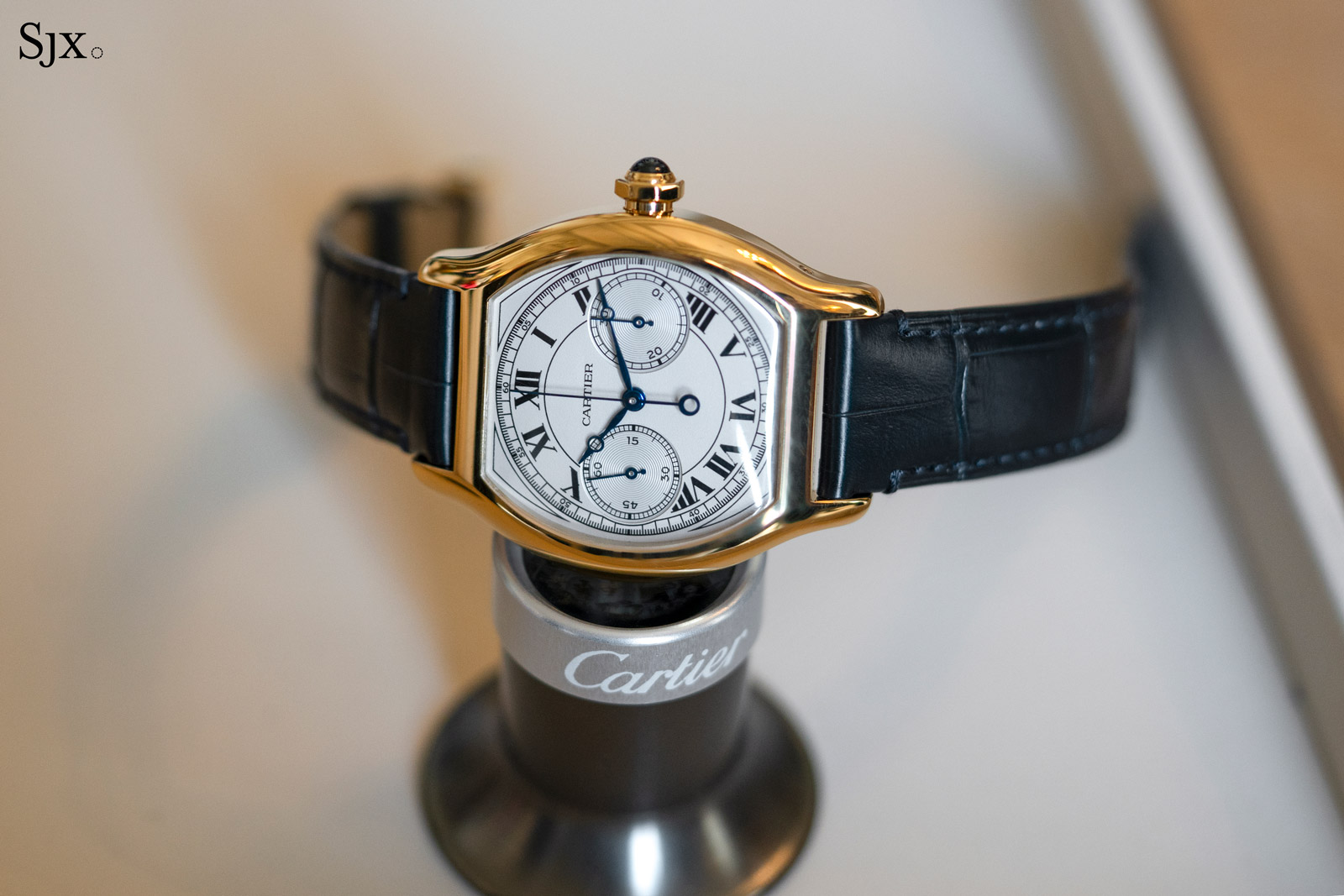
As is tradition, the yellow gold model has a blue sapphire in the crown
The gold version has an obvious grained finish that evokes vintage watches of the period. This texture goes well with the printed numerals that have a similar vintage feel. One detail I would have changed are the registers, which would have been more complementary without the concentric stamping that is typical of modern watches.
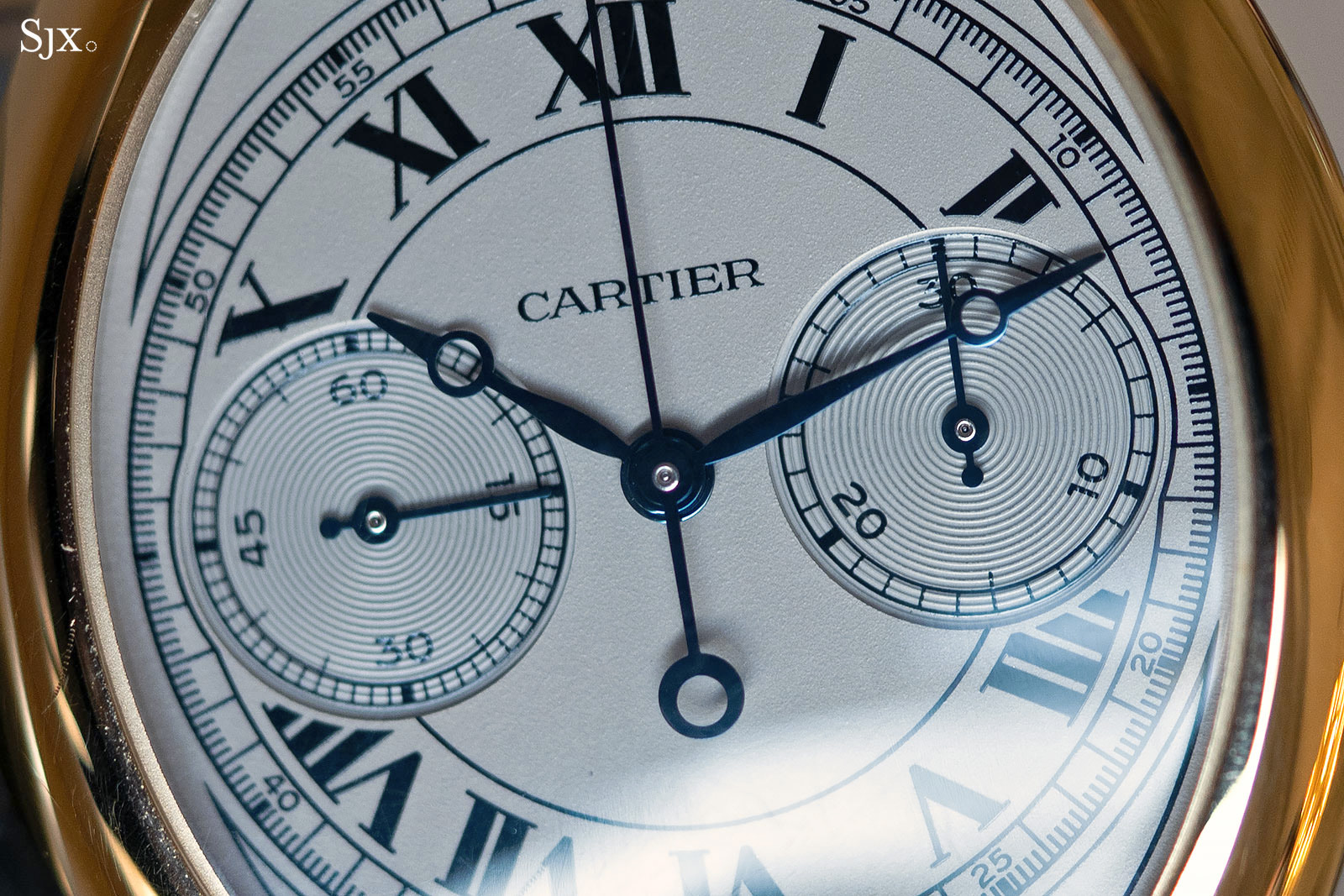
The platinum model has an identical dial design, but done differently. The silvered opaline finish on the dial is almost smooth, while the numerals are applied and reflective. As a result, the look is obviously modern.
I would have preferred darker tone numerals for a higher contrast dial, though this combination is understandable since it is similar to the livery found on past Privé models in platinum.
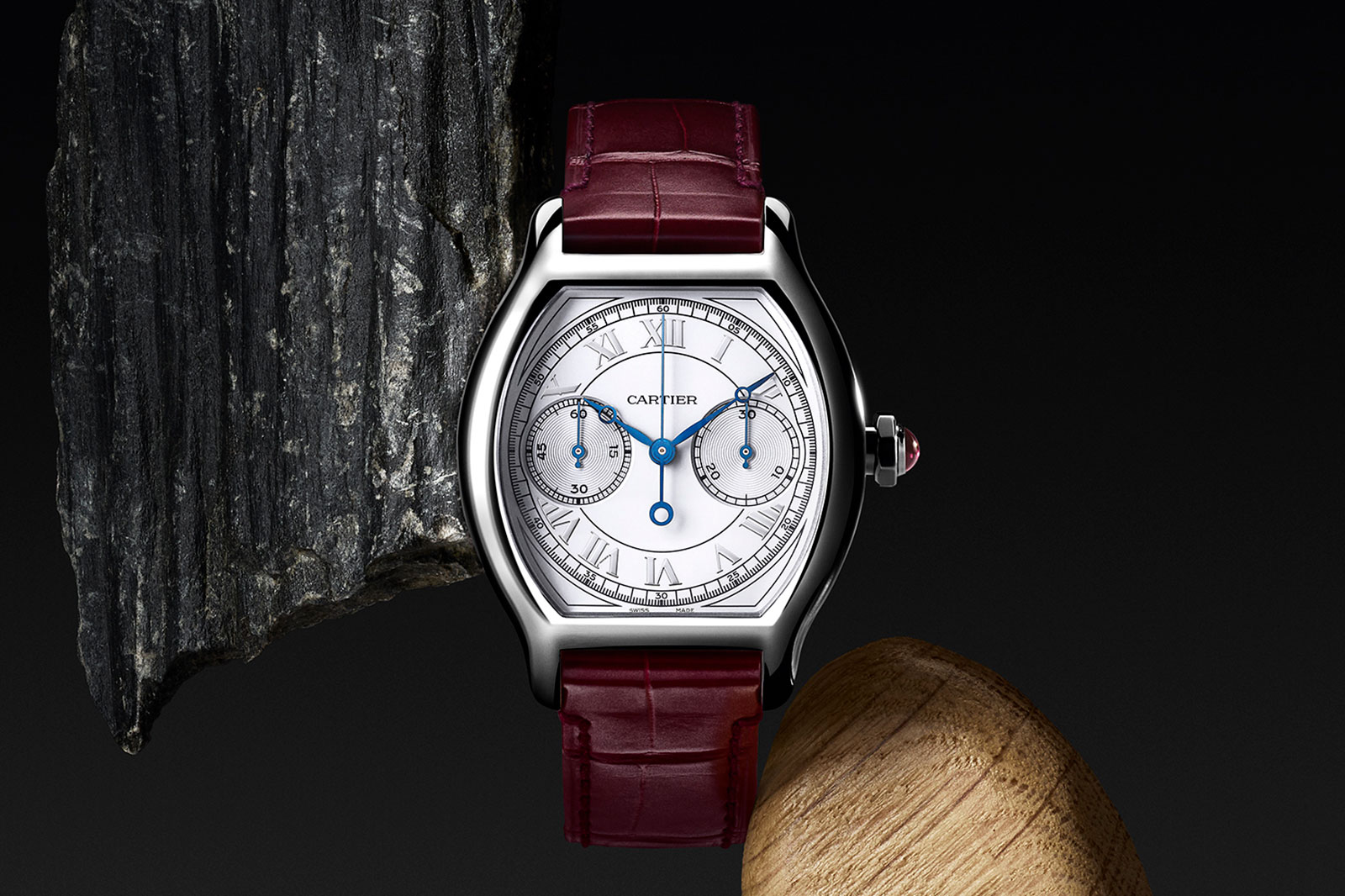
The platinum version sports a ruby cabochon in the crown. Image – Cartier
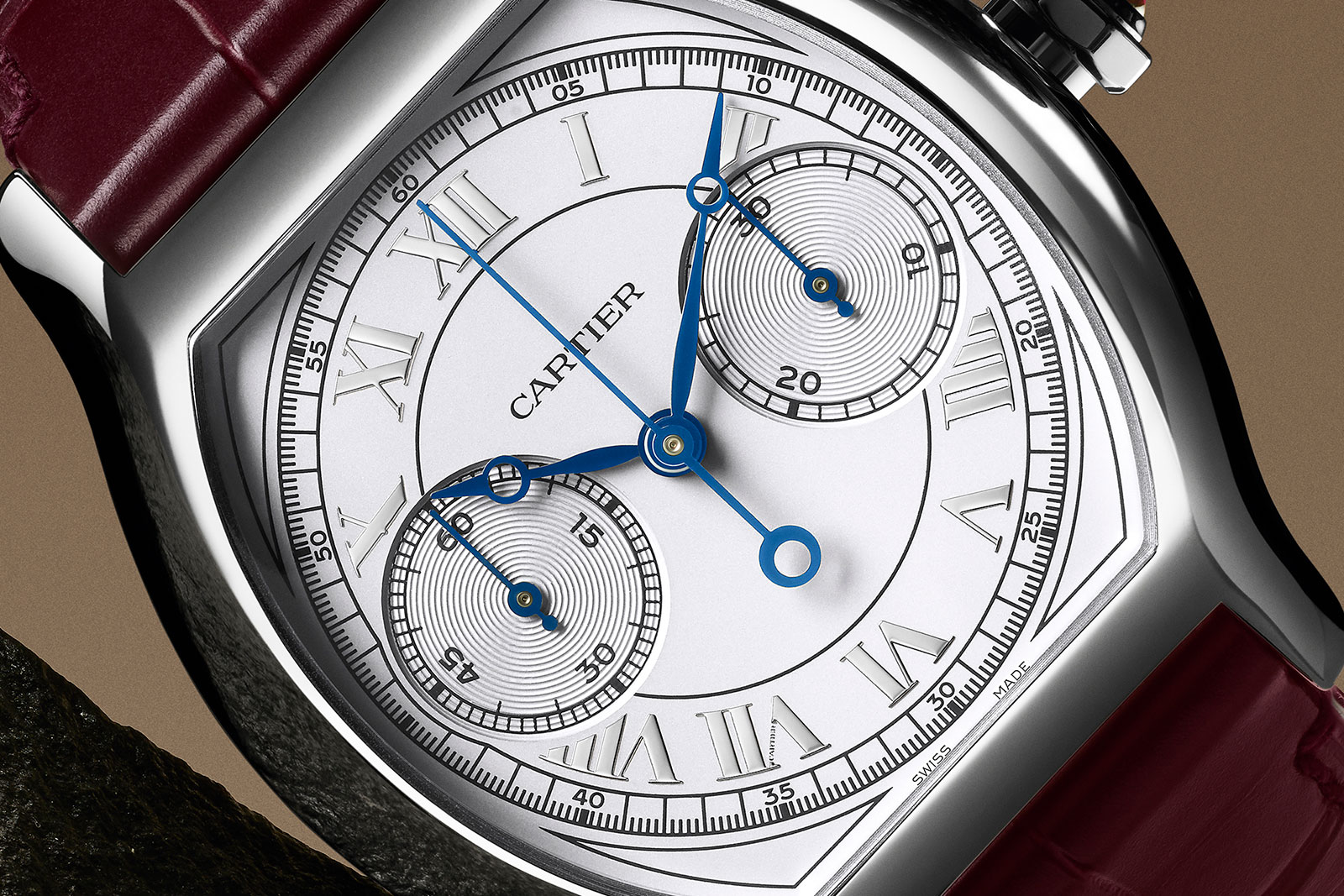
Both versions share the same case dimensions, a diameter of 34.8 mm and thickness of 10.2 mm. The size and proportions are ideal and one of the most appealing aspects of the watch.
The case is unusually slim for a chronograph, and possible because the movement is also unusually slim. At 4.3 mm high it ranks amongst the thinnest chronographs on the market; it is definitely the thinnest chronograph movement made by Cartier.
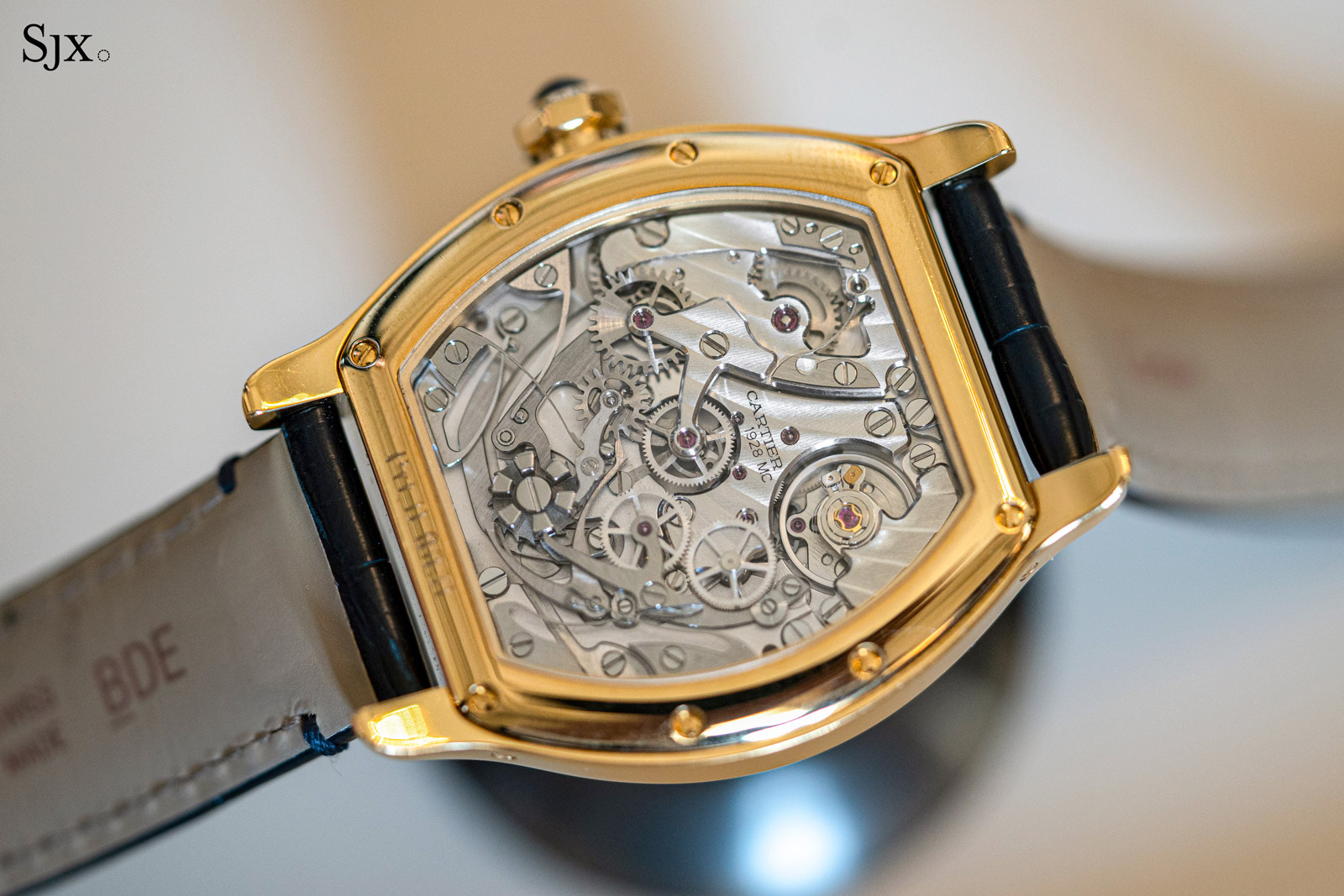
The cal. 1928 MC has a fairly traditional construction with a lateral coupling and column wheel for the chronograph. This results in an attractive, old-school appearance with the chronograph levers visible; the lower half of the movement is mostly occupied by the chronograph works.
The chronograph mechanism was developed with the help of Le Cercle des Horlogers, the movement specialist also responsible for the movement in the Louis Vuitton Tambour and Biver Carillon Tourbillon. The base movement, however, is a Cartier in-house calibre, so some parts of the cal. 1928 MC are familiar. This explains the Etachron regulator that also found in other Cartier movements, which is the only aspect of the movement I would have done differently.
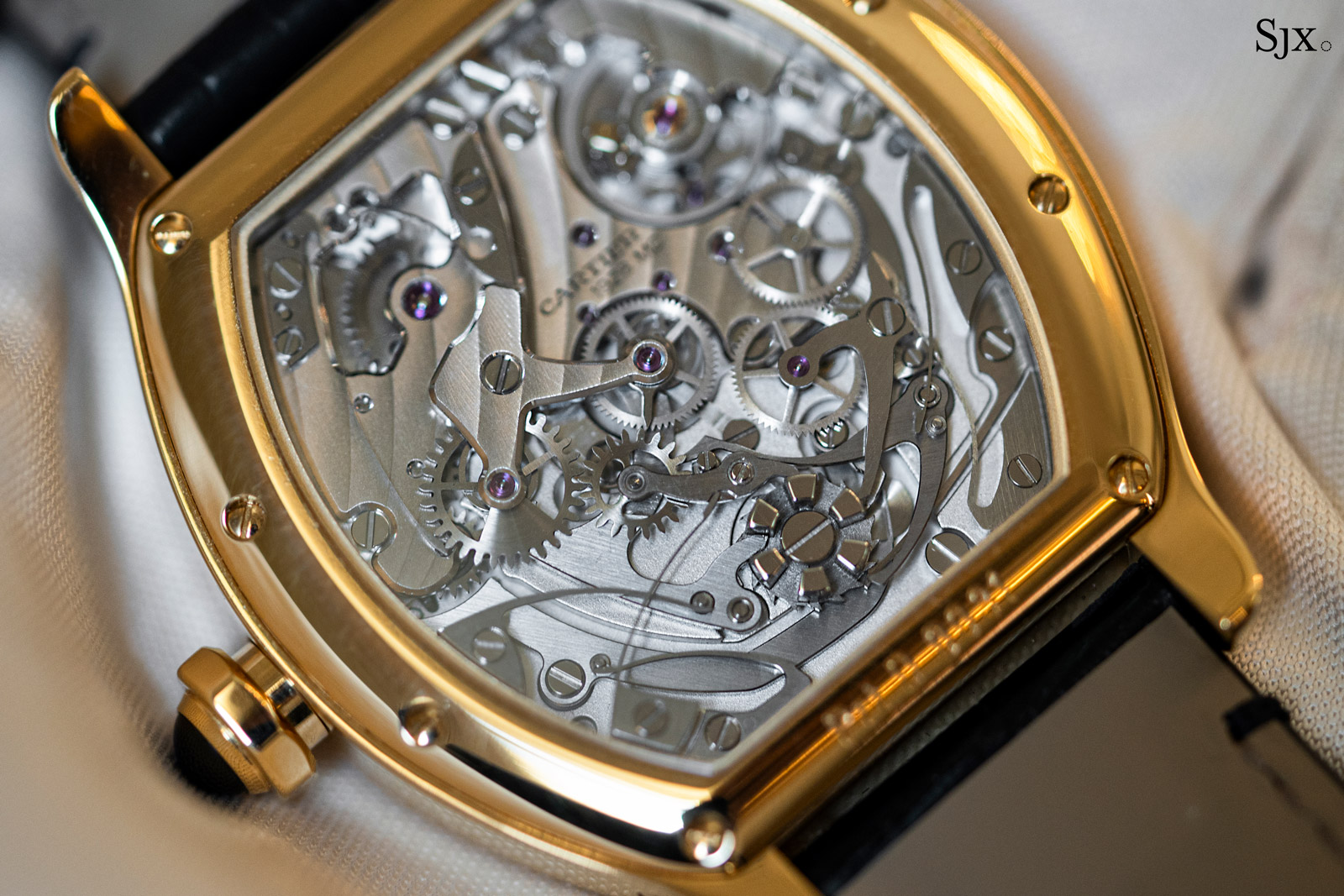
In terms of decoration, the movement is finished as expected for a watch in this category. The decoration is attractive and mostly done by machine, but with elements of hand finishing here and there.
If there’s a criticism to be made, it’s not so much the decoration but the colour of the movement. With almost every component in steel or rhodium plating, there is little contrast in the movement, which is a shame given the intricate aesthetics of the chronograph. A few strategically placed parts with a gilt finish would have given the movement more colour and visual appeal.
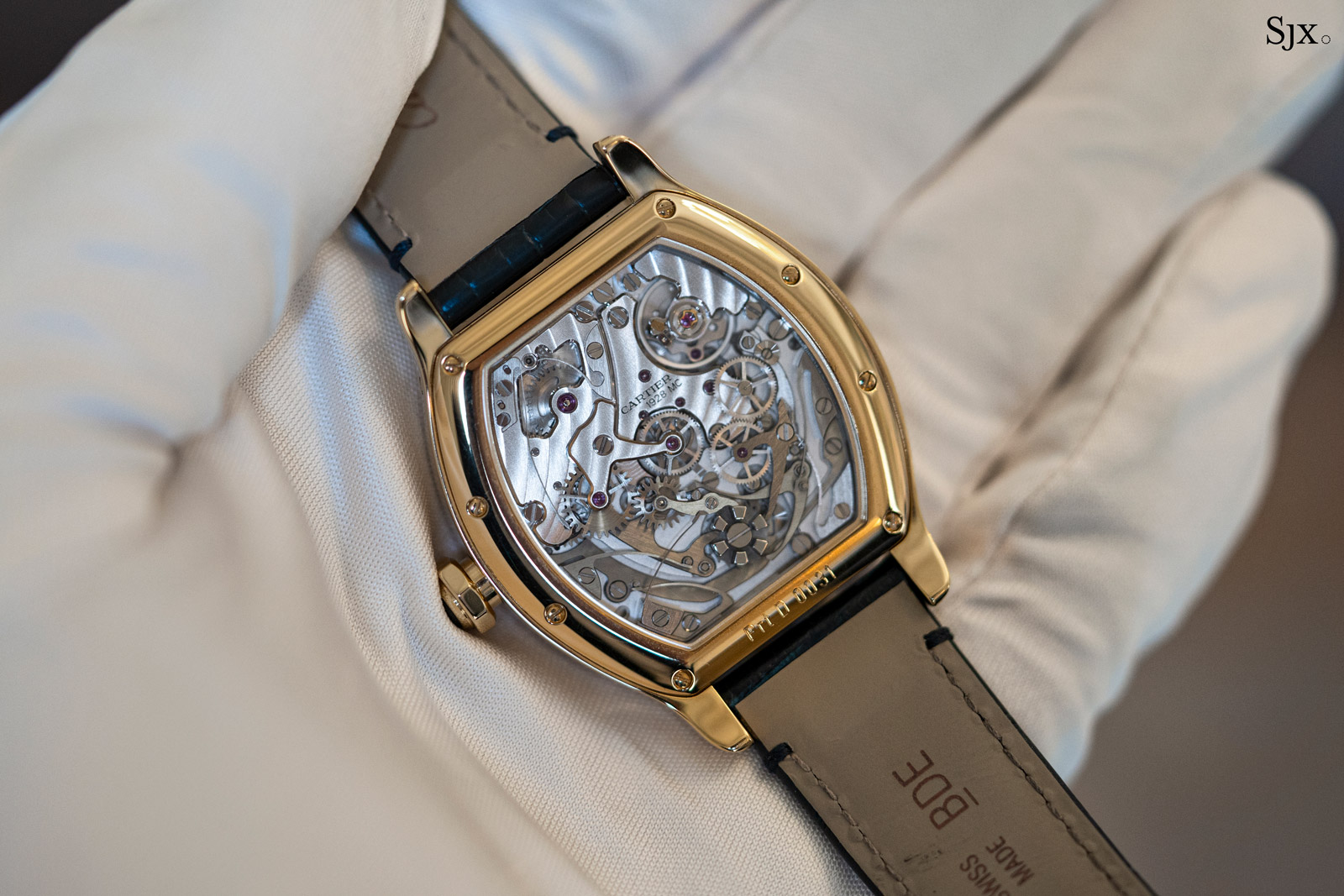
Concluding thoughts
Executed well in terms of design and details, the Tortue Monopoussoir will be successful because it revisits a popular model. But it’s arguably more significant than being a pretty face because the cal. 1928 MC is a notable achievement for Cartier.
All of the movement’s characteristics – thinness, tonneau outline, single button, and a traditional construction – mark it out as one of the most interesting recent chronograph calibres. I won’t be surprise to see it return in some other form in the future.
Key facts and price
Cartier Prive Tortue Monopoussoir Chronograph
Ref. CRWHTO0007 (yellow gold)
Ref. CRWHTO0008 (platinum)
Diameter: 34.8 mm
Height: 10.2 mm
Material: Yellow gold or platinum
Crystal: Sapphire
Water resistance: Not applicable
Movement: Cal. 1928 MC
Features: Hours, minutes, seconds, and chronograph
Frequency: 25,200 beats per hour (3.5 Hz)
Winding: Manual
Power reserve: 44 hours
Strap: Alligator leather strap with pin buckle
Limited edition: 200 pieces in each metal
Availability: At Cartier boutiques and retailers
Price: €55,000 in yellow gold; €60,000 in platinum
Singapore dollar prices include taxes
For more, visit Cartier.com
Addition April 17, 2024: Role of Le Cercle des Horlogers in movement development added.
Back to top.
